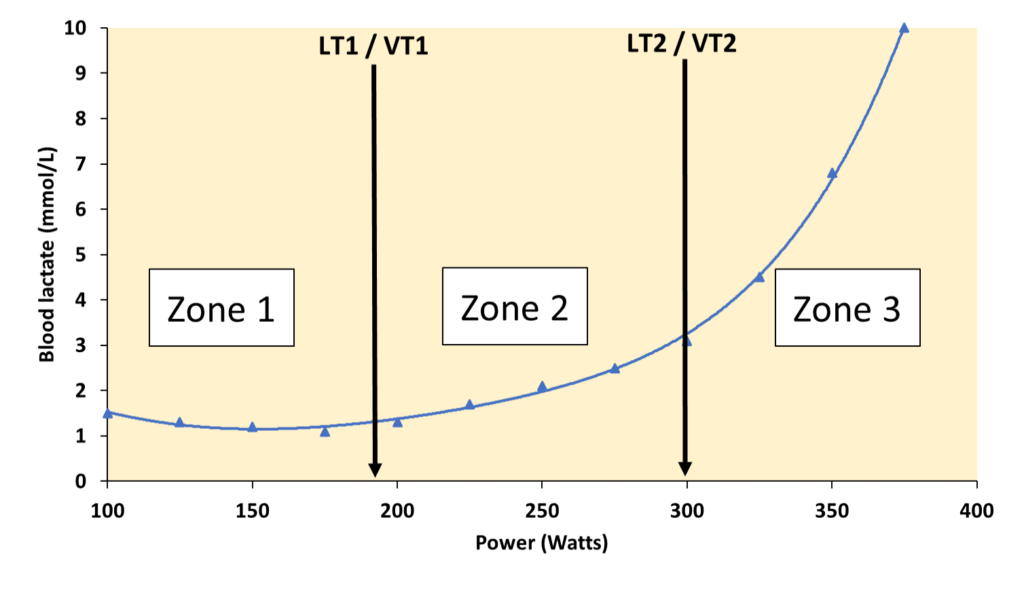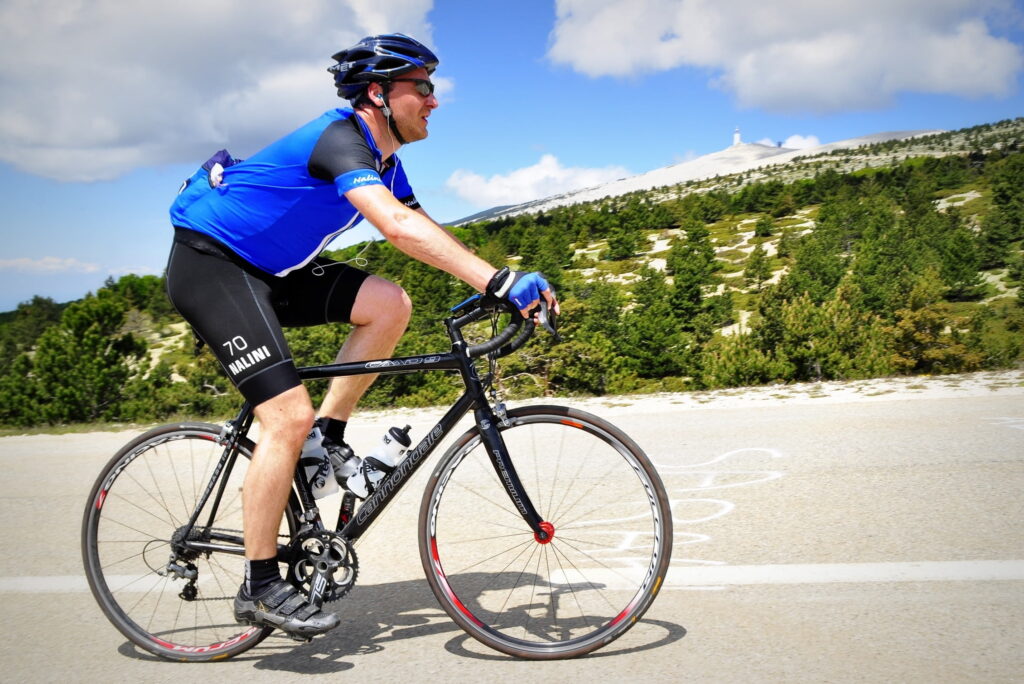Sometimes modern technology just can’t beat simple low-tech solutions. The Talk Test may be the perfect solution for cyclists bored of looking at screens, or for those who just don’t have the budget to keep up with tech.
In a previous article I wrote a brief introduction to the rating of perceived exertion (RPE). In the article I explained how RPE could be used to set training intensity and to even measure the overall load of a training session.
RPE has the advantages that it is inexpensive, easy to use, and is based upon your individual perception of the effort required to complete training. Although it seems low tech RPE is closely related to measurable physiological changes such as heart rate, blood lactate and ventilation. In fact, it is the last of these, ventilation, that provides scope for an even simpler method of gauging exercise intensity: the Talk Test.
The Talk Test originated from the work of Professor John Grayson who, in 1939, advised mountaineers to ‘climb no faster than they could speak’. In 1998 Goode and colleagues published details of a further test based upon ventilation known as the ‘Breath Sound Check’ (BSC). This was designed to give older adults and children who found measuring their pulse difficult a way to estimate the minimum intensity of exercise required to improve fitness.
Gossiping
When I first started cycling, and long before inexpensive heart rate monitors were available, I read somewhere about the ‘gossip threshold’. It’s not a term I have since heard discussed but it is something we are all aware of.
Imagine riding in a group and the conversation is flowing. The pace is easy and relaxed so, cyclists being cyclists, it’s time to catch-up on the latest gossip. It’s the usual stuff about bike tech, who is currently in form and which café serves the best coffee. Then, with little warning, you realise the bunch is much quieter, your eyes are more intently focussed on the wheel in front, and you are aware of your breathing. According to the article I read, you have just passed the ‘gossip threshold’.
The importance of thresholds
So, what is the significance of the ‘gossip threshold’ or any other threshold for that matter?
Thresholds are commonly used to measure improvements in fitness and to mark the boundaries between different exercise intensities, or training zones. Within these zones the energy for exercise is provided by different combinations of fuels metabolised aerobically and anaerobically. For example, very low intensity exercise predominantly burns fat while the energy for a 10 second sprint is mainly supplied by the anaerobic breakdown of carbohydrate. It is important to remember that thresholds aren’t distinct switching points as there is a lot of cross-over in energy supply. They merely represent points where one can expect to see significant metabolic differences.
The terminology of thresholds actually gets very confusing because there are so many different types and definitions. To make matters worse, there can be multiple methods to measure a single threshold making comparison very tricky. I am going to simplify matters by focussing on just two approaches.
Blood lacatate thresholds
During a graded exercise test (one where exercise intensity is increased stepwise every 3 to 5 minutes) it is possible to measure two disproportionate increases in blood lactic acid (lactate). These points are known as lactate thresholds one and two (LT1 & LT2).
The power or heart rate at LT1 marks the top of the endurance training zone where cyclists perform long steady rides. Efforts between LT1 and LT2 are typically referrred to as ‘tempo training’ with ‘threshold training’ undertaken around LT2. High intensity interval training (HIIT) and sprint training are undertaken at intensities above LT2.
Most training zone systems are based upon these three physiological zones although you may see them further subdivided. For cyclists curious about how the Functional Threshold Power (FTP) compares with these thresholds, it roughly approximates to LT2. However, LT1 and FTP aren’t equivalent and so you shouldn’t really use these terms interchangeably.

Ventilatory thresholds
The last pieces of the jigsaw needed to explain the Talk Test are the first and second ventilatory thresholds (VT1 & VT2). High school biology teaches us that when we exercise aerobically we use oxygen to liberate energy from fuel and produce the waste gas carbon dioxide. As the intensity of exercise increases more oxygen is required to burn ever increasing amounts of fuel and, in turn, you will breathe out greater quantities of carbon dioxide.
Breathing increases linearly from rest to LT1 but then there is a disproportionate increase in the rate and depth of breathing. This occurs because a process known as buffering causes a significant increase in the amount of carbon dioxide in the blood. Bicarbonate is a buffer present in the blood to keep the pH within certain limits but a by-product of the buffering process is the production of carbon dioxide. This excess carbon dioxide, above that produced from burning fuel aerobically, drives an marked increase in ventilation and the athlete experiences shortness of breath. This point is known as the first ventilatory threshold (VT1).
The second uptick in lactic acid release into the blood at LT2 causes a further hyperventilation known as the second ventilatory threshold (VT2). Generally speaking, VT1 and VT2 coincide with LT1 and LT2, respectively, and can be determined in the lab using sophisticated respiratory gas analysis. However, VT1 & VT2 can also be identified at home on the road or trainer just by monitoring your breathing.
the Talk test
The talk test is rather like a normal ramp test where exercise intensity is progressively increased but, instead of taking physiological measures, the athlete is required to recite a specific phrase. As the intensity of exercise increases breathing becomes more intense and so the phrase is more difficult to repeat.
A research study reported that it was possible to successfully identify both VT1 & VT2 in highly trained cyclists just using the talk test. When speaking first became difficult for the participants (the gossip threshold) this corresponded to VT1: the upper limit of easy, predominantly fat burning endurance training. The first intensity at which the athletes were unable to talk was found to correspond to VT2 (approximately equivalent to FTP).
The breath sound check (BSC)
The breath sound check test is an alternative approach also based upon changes in breathing. It was developed to determine VT1 in children and adults and is particularly useful in exercise referral settings where physical activity is prescribed for its health promoting benefits. The aim is to exercise at the point where you can first hear your breathing. This has been shown to correspond closely with VT1. In fact, over my many years of experience of lab testing, I have got to the stage where I can identify VT1 and VT2 by merely listening to my test subjects’ breathing.
Practical Application of the talk test
A polarised model of training holds that 80-85% of total training volume should be completed at easy intensities up to VT1/LT1; around 5% of volume at threshold (i.e. at VT2/LT2), and the remaining 10-15% as high intensity training above VT2/LT2. These zones can be determined in the laboratory but this is costly and regular retests are required as fitness levels change. A far less costly and more convenient approach is to use a combination of the talk test and breath sound check test to estimate your exercise intensity whilst cycling. Although this is a low-tech method it can be used in combination with power, heart rate and RPE to provide a robust approach to setting training intensity and monitoring improvements in fitness.
The beauty of these methods of estimating intensity (and of RPE) is that, unlike power output, there is no need to keep testing to determine where the thresholds occur. This is because the talk test thresholds are based upon consistent physiological changes within the body independent of the absolute power output.
final thoughts
When I first trained as a sports scientist, I was naturally fascinated in scientific approaches to training endurance athletes and was eager to use the latest lab tests and training methods. At the time there was a dogma of measurement and intervention which still largely prevails to this day. However, over the years, I have come to realise that the human body has an incredible capacity to self-regulate and it does this through precisely controlled unconscious mechanisms as well as conscious feedback through a raft of sensations and emotions.
I believe that if we learn to listen to these bodily cues then it is possible to train and compete in a highly effective way without the need to keep referring to electronic devices. That is not to say that these gadgets aren’t important – they provide hard numbers that enable us to objectively measure performance improvements – but so much of cycling (or any endurance sport) requires some level of feel. When you have to pace an effort on a hill or gauge your best performance over a series of intervals it is only by monitoring your internal signals that you will know just how hard to push. In my view, the talk test and RPE scale are good tools for understanding how to do this.


